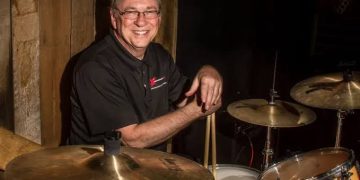
Growing up, my father was a high-standards jazz musician, a saxophonist, and most definitely a jazz purist. He was the first to teach me the love of music and the appreciation and value of its rich history. Later, when I studied drums with Walter Salb (a notoriously demanding D.C. drum instructor), I learned there was no outrunning the truth because Walter never sugar-coated anything. These were two tough men with uncompromising standards and, to this day, whatever musician or music educator or business person I have become, it has stemmed from their pushing me to embrace my highest potential.
Oddly, I would now add COVID-19 to that list of teachers.
COVID-19’s first lesson: It paid to believe in the Boy Scout Motto – Be Prepared
Although no one could have been truly prepared for this moment, some individuals, institutions, and businesses were better equipped to deal with the available online solutions and opportunities. Some of that readiness stemmed from businesses, schools, and individuals already having good online systems and platforms in place, and others from the willingness to adapt quickly to the readily available online tools.
Because of COVID-19, every major university and every school system across the entire country had no choice but to close physical buildings and to shut down entire campuses, salvaging whatever they could via online education. Some of these school systems were prepared or quasi-ready to embrace and employ an online substitution; sadly, some were not prepared. For music stores, private instructors, and artists, it was no different.
The second lesson: Each online platform has its strengths and its weaknesses
Many major school systems such as Fairfax country in Virginia and the NYC school systems embraced using Zoom as their platform. Employees and students found it quite user-friendly. However, “Zoom-bombing” quickly went viral and unwanted hackers disrupted online meetings and classroom sessions. Upon further investigation, the schools found other critical security issues with Zoom. Therefore, as a safety measure, both major school systems, along with many others, abandoned the use of Zoom.
The third lesson: The best practice is recognizing the flaws and the benefits of working online
The pandemic helped us clearly understand the differences between the limited “old school” values and the savoir-faire of technological solutions. Musicians who were tech-savvy immediately embraced online teaching platforms and livestreaming tools available for performing. There’s no question that online lessons have limitations, but this method of delivery saved and protected the income of many music teachers worldwide.
Some “old school” teachers have had a much more difficult time embracing the whole online approach to education. Regardless of what anyone says, the two methods of delivering instruction are extremely different. The coronavirus showed us quickly that those who aren’t adaptable to today’s mediums suffer the financial consequences of limited thinking. As a teacher myself, the online platforms enabled me to continue lessons without interruption and students really seemed to appreciate that I was willing to find online solutions that enabled us to continue working together.
The fourth lesson: Both the instructor and the student must have equally good tech tools
The better gear you have, the higher the quality experience you can provide, but it’s important to note that just because you have access to a tech-based tool, doesn’t mean your students do. Many taking music lessons don’t necessarily sophisticated gear and online signal strength varies from region to region – often towns further outside metro areas have less reliable internet connections.
The fifth lesson: Expect the unexpected lag time and sound cancellation
When an instructor teaches in person, suggestions are clearly made in real time, but with online teaching, there can be latency as well as sound cancellation issues. This means teachers must make artificial adjustments, so that the communication to the student is effectively heard and assimilated.
COVID-19’s last lesson: The human spirit can survive anything
For three years I have taught a middle school student who is a select-mute. Regardless of his condition, he does play like crazy. We communicate with nods and glances as I talk. The most important tools we use are respect, patience, and trust. At first, these emotions were difficult to exude in an online setting because of the time lag. However, I let him know I was there for him, and we would figure it out together. That solution is “old school” and that tool is called compassion. The other tool I wasn’t able to use as effectively with him was positive energy. It’s much harder to convey energy in an online environment because you can’t “feel” that direct energy or see it in someone’s eyes online. There is no genuine substitute for direct, face-to-face teaching.
After COVID-19
Coming out of the COVID-19 experience, we will never be able to put the genie back in the bottle, and I want to be clear: technology can be a great friend; I am a user and a believer.
But if the late John Prine taught us anything, it’s that authenticity is more important than anything else – whatever your vocation. Without authenticity, genuineness, legitimacy, or trust, online tools won’t help you.




























Looking Back on 2025: A Year of Controlled Chaos (Emphasis on “Controlled”)